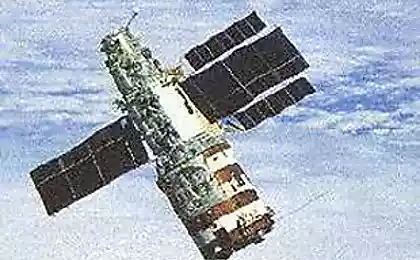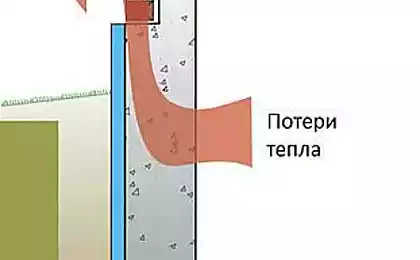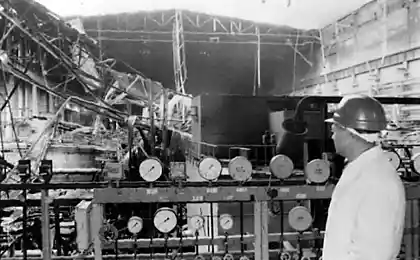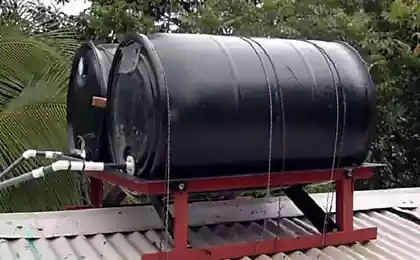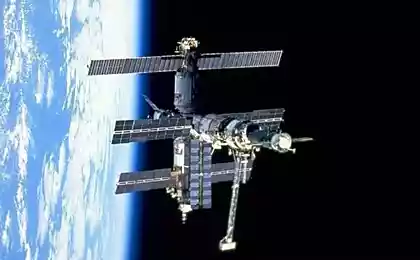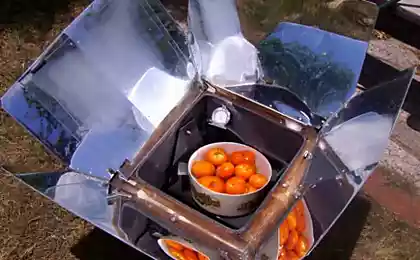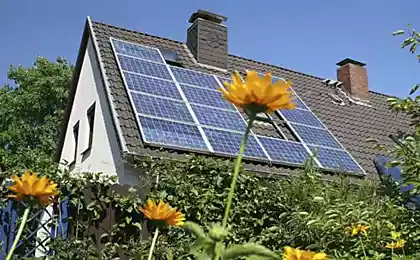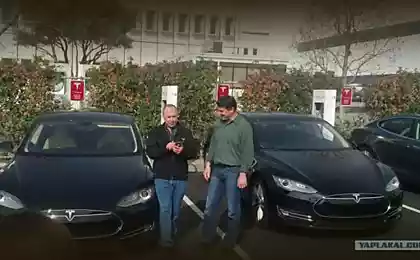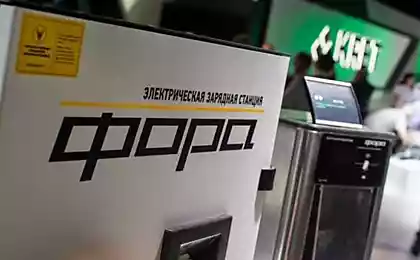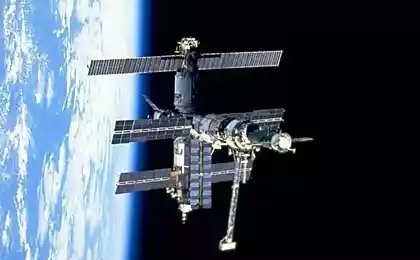539
The types of solar plants
Solar power plants are divided into two types: thermal and electrical. Heat produce heat for hot water and heating and electric, respectively, electricity.
Heating system: — low temperature:
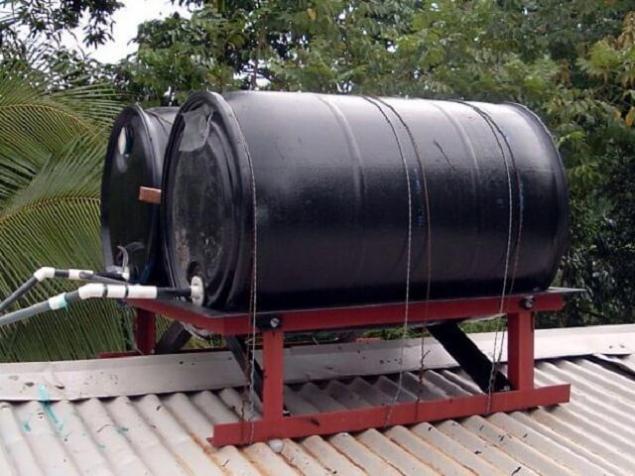
Such systems are mainly used in suburban areas and represent a vessel or a piping system is painted black.
The main advantages of such systems is their low cost and ease of maintenance.
The disadvantages include low efficiency, work only in summer and large volumes of coolant.
— High temperature:
Parabolic solar concentrator
Used for heating the coolant above 100 ° C. In steam heating systems, for electricity generation steam turbines, etc.
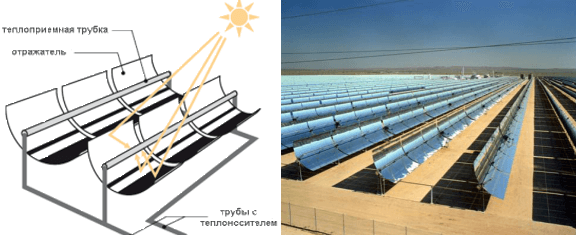
Advantages — heating the coolant to a high temperature, ease of construction and maintenance.
Disadvantages — high cost, must be used with a system of sun tracking (tracking)
Solar collector flat type.
Has a simple design and not very expensive.
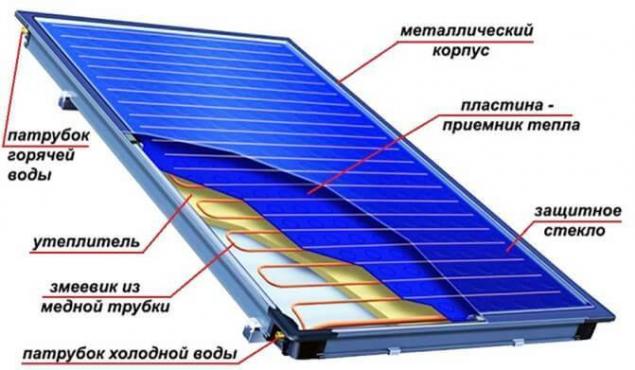
Water or antifreeze is heated in the pipe system to which heat is fed through the selective coating. In summer, the temperature in the system rises to 100 deg.
Advantages — low cost, ease of installation, possibility of use in the home.
Disadvantages — seasonal use (the system is not working in the winter), low efficiency
Vacuum collector tube type.
Such a system consists of sets of tubes that perform the function of a thermos. Inside the glass flasks are absorbing plate with copper tubes which transfer the heat to the system.
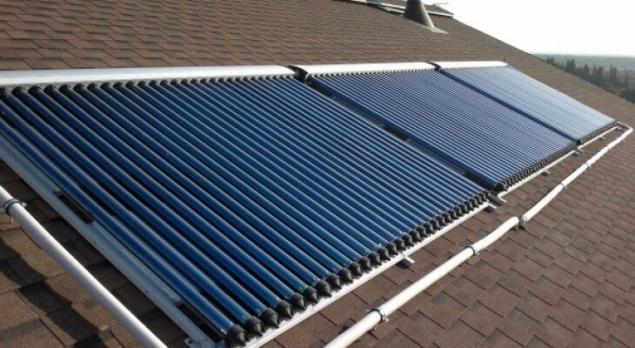
The advantages of such systems is minimal heat loss, the use of in cold seasons, high efficiency.
Cons — high cost, fragility.
Photovoltaic system
Such systems are divided into two main types. Stand-alone and network (paired with the existing electric networks.
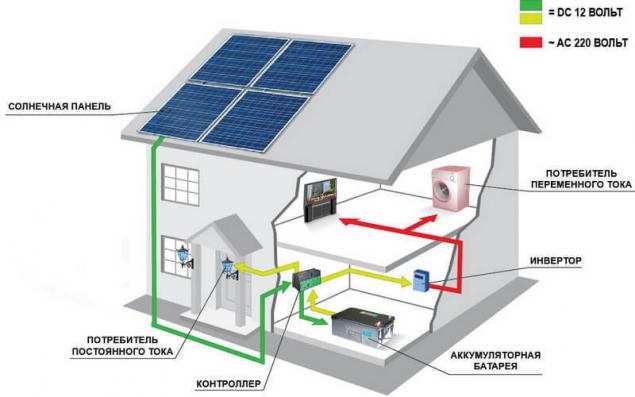
The positive side of this system — autonomy.
Cons — high cost, low power, maintenance-free.
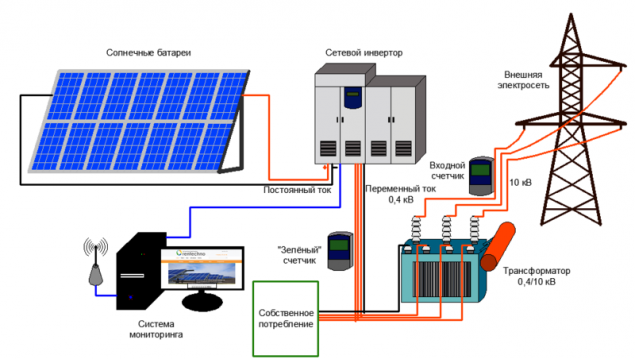
The advantages of such a system is an acceptable cost, the possibility of selling the energy on a green tariff, easy maintenance, it is possible to obtain significant power.
Cons — power generation only in the daytime, the impossibility of energy storage.
Possible cases of combination of these two systems. In this embodiment, the network station is added a small battery pack for backup power in case of disconnection of the network.
Hybrid photo-heat system.
These systems are a combination of flat solar collectors and photovoltaic modules.
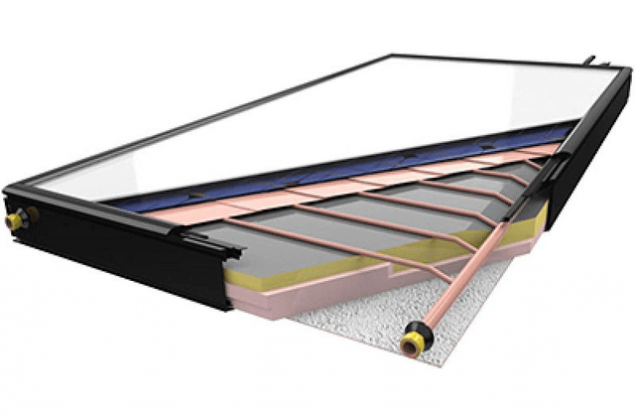
In this system, the PV modules are working under favourable conditions, as they are further cooled by the coolant.
The advantages of these systems include: minimal footprint on the roof, a good efficiency of photovoltaic systems.
Disadvantages are those disadvantages which are inherent in flat collectors, the high price, the excess heat energy in the summer (or lack of electric power if we orientirueshsya for the required amount of heat in the summer), the complexity of the system and the complexity of its maintenance.
As we have seen, in this embodiment, there are more negatives than benefits. So this option we consider as a special case.
We recommend: for thermal energy vacuum tube collector, and for producing electricity network photovoltaic plant.
The advantages of this scheme are: providing free hot water for most of the year + the development of the necessary amount of electricity available for sale by the “green tariff”. published
Source: svn-energy.com.ua/ru/uslugi/solnechnaya-energetika/vidy-solnechnykh-stantsijj
Heating system: — low temperature:

Such systems are mainly used in suburban areas and represent a vessel or a piping system is painted black.
The main advantages of such systems is their low cost and ease of maintenance.
The disadvantages include low efficiency, work only in summer and large volumes of coolant.
— High temperature:
Parabolic solar concentrator
Used for heating the coolant above 100 ° C. In steam heating systems, for electricity generation steam turbines, etc.

Advantages — heating the coolant to a high temperature, ease of construction and maintenance.
Disadvantages — high cost, must be used with a system of sun tracking (tracking)
Solar collector flat type.
Has a simple design and not very expensive.

Water or antifreeze is heated in the pipe system to which heat is fed through the selective coating. In summer, the temperature in the system rises to 100 deg.
Advantages — low cost, ease of installation, possibility of use in the home.
Disadvantages — seasonal use (the system is not working in the winter), low efficiency
Vacuum collector tube type.
Such a system consists of sets of tubes that perform the function of a thermos. Inside the glass flasks are absorbing plate with copper tubes which transfer the heat to the system.

The advantages of such systems is minimal heat loss, the use of in cold seasons, high efficiency.
Cons — high cost, fragility.
Photovoltaic system
Such systems are divided into two main types. Stand-alone and network (paired with the existing electric networks.
- Autonomous systems are used in cases when the connection to the grid is impossible or not economically justified. A conceptual scheme of such a station consists of solar panels, battery pack, charger for battery and inverter which converts the DC current from the solar panels into AC, which we use for devices.

The positive side of this system — autonomy.
Cons — high cost, low power, maintenance-free.
- Network systems used for the transmission of energy in an existing network. These systems have a lower cost (due to the lack of batteries) and have a simple layout. This system includes solar modules, inverter, metering system.

The advantages of such a system is an acceptable cost, the possibility of selling the energy on a green tariff, easy maintenance, it is possible to obtain significant power.
Cons — power generation only in the daytime, the impossibility of energy storage.
Possible cases of combination of these two systems. In this embodiment, the network station is added a small battery pack for backup power in case of disconnection of the network.
Hybrid photo-heat system.
These systems are a combination of flat solar collectors and photovoltaic modules.

In this system, the PV modules are working under favourable conditions, as they are further cooled by the coolant.
The advantages of these systems include: minimal footprint on the roof, a good efficiency of photovoltaic systems.
Disadvantages are those disadvantages which are inherent in flat collectors, the high price, the excess heat energy in the summer (or lack of electric power if we orientirueshsya for the required amount of heat in the summer), the complexity of the system and the complexity of its maintenance.
As we have seen, in this embodiment, there are more negatives than benefits. So this option we consider as a special case.
We recommend: for thermal energy vacuum tube collector, and for producing electricity network photovoltaic plant.
The advantages of this scheme are: providing free hot water for most of the year + the development of the necessary amount of electricity available for sale by the “green tariff”. published
Source: svn-energy.com.ua/ru/uslugi/solnechnaya-energetika/vidy-solnechnykh-stantsijj
